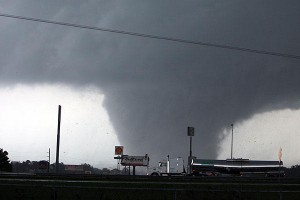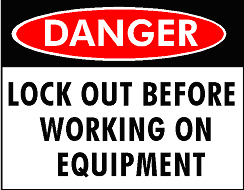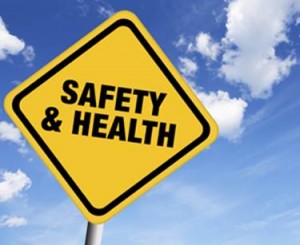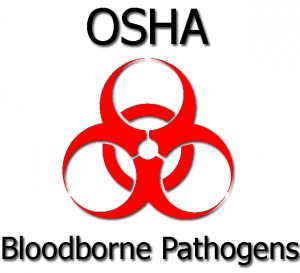 OSHA’s bloodborne pathogens standard, 29 CFR 1910.1030 applies to all persons who may reasonably anticipate contact with blood or other potentially infectious materials in the course of their employment. This includes contact with skin, eyes, mucous membranes or contact from piercing the skin. The focus of the regulation is the creation of a written exposure control plan that describes how the employer will protect employees from exposure.
OSHA’s bloodborne pathogens standard, 29 CFR 1910.1030 applies to all persons who may reasonably anticipate contact with blood or other potentially infectious materials in the course of their employment. This includes contact with skin, eyes, mucous membranes or contact from piercing the skin. The focus of the regulation is the creation of a written exposure control plan that describes how the employer will protect employees from exposure.
Category: Risk Management
Tornado Preparedness and Response
Preparedness involves a continuous process of planning, equipping, training and exercising. Planning for tornadoes requires identifying a place to take shelter, being familiar with and monitoring your community’s warning system, and establishing procedures to account for individuals in the building. Employers may need to obtain additional equipment and/or resources (e.g. Emergency Supply Kits) identified in the plan. In addition, workers need to be trained and plans need to be practiced to ensure that personnel are familiar with what to do in the event of a tornado.
Planning
Identifying Shelter Locations
- An underground area, such as a basement or storm cellar, provides the best protection from a tornado. If an underground shelter is unavailable, consider the following:
- Seek a small interior room or hallway on the lowest floor possible
- Stay away from doors, windows, and outside walls
- Stay in the center of the room, and avoid corners because they attract debris
- Rooms constructed with reinforced concrete, brick or block with no windows and a heavy concrete floor or roof system overhead
- Avoid auditoriums, cafeterias and gymnasiums that have flat, wide-span roofs.
- Personnel should also be aware of what to do if caught outdoors when a tornado is threatening. Seek shelter in a basement or a sturdy building. If one is not within walking distance, try to drive in a vehicle, using a seat belt, to the nearest shelter. If flying debris is encountered while in a vehicle, there are two options: 1) staying in the vehicle with the seat belt on, keeping your head below the windows and covering it with your hands or a blanket, 2) if there is an area which is noticeable lower than the roadway, lie in that area and cover your head with your hands.
Accountability procedures
The following steps are recommended to help ensure the safety of personnel if a tornado occurs:
- Warning Systems
- Tornado Watch – Tornadoes are likely to occur in the watch area. Be ready to act quickly and take shelter, and check supply kits. Monitor radio and television stations for more information.
- Tornado Warning – Imminent threat – A tornado has been sighted in the area or has been indicated by radar. Take shelter immediately.
- Your local emergency management office can provide information about your community’s tornado warning system.
- Develop a system for knowing who is in the building in the event of an emergency
- Establish an alarm system to warn workers
- Test systems frequently
- Develop plans to communicate warnings to personnel with disabilities or who do not speak English
- Account for workers, visitors, and customers as they arrive in the shelter
- Use a prepared roster or checklist
- Take a head count
- Assign specific duties to workers in advance; create checklists for each specific responsibility. Designate and train workers alternates in case the assigned person is not there or is injured
No Lockout/Tagout Can Be Fatal
Worker killed at Michigan molding plant
A worker was crushed to death March 5, 2014 in an industrial accident at a plastics molding plant in Shelby Township, Mich.
The victim was attempting to clear an obstruction from a press machine at about 6 a.m. when he was fatally injured, according to a news release from the Shelby Township Police Department.
“The machine cycled to stamp a part and crushed the victim,” the release says.
The victim died at the scene before police and fire personnel arrived.
via Worker killed at Michigan molding plant – News – Plastics News.
“While this is still under investigation by MIOSHA it’s obvious this machine was being worked on with out following Lockout-tagout procedures. Unfortunately this time it was fatal.”
Safe Patient Handling
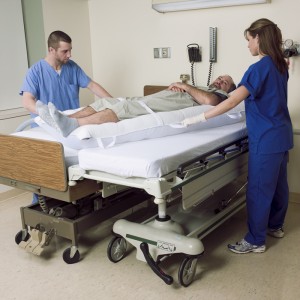 Rates of musculoskeletal injuries from overexertion in healthcare occupations are among the highest of all U.S. industries. Data from the Bureau of Labor Statistics (BLS) show that in 2011, the rate of overexertion injuries averaged across all industries was 38 per 10,000 full time workers. By comparison, the overexertion injury rate for hospital workers was twice the average (76 per 10,000), the rate for nursing home workers was over three times the average (132 per 10,000), and the rate for ambulance workers was over six times the average (238 per 10,000). The single greatest risk factor for overexertion injuries in healthcare workers is the manual lifting, moving and repositioning of patients, residents or clients, i.e., manual patient handling.
Rates of musculoskeletal injuries from overexertion in healthcare occupations are among the highest of all U.S. industries. Data from the Bureau of Labor Statistics (BLS) show that in 2011, the rate of overexertion injuries averaged across all industries was 38 per 10,000 full time workers. By comparison, the overexertion injury rate for hospital workers was twice the average (76 per 10,000), the rate for nursing home workers was over three times the average (132 per 10,000), and the rate for ambulance workers was over six times the average (238 per 10,000). The single greatest risk factor for overexertion injuries in healthcare workers is the manual lifting, moving and repositioning of patients, residents or clients, i.e., manual patient handling.
via CDC – Safe Patient Handling – NIOSH Workplace Safety and Health Topic.
Operator Error Kills Two Men in Crane Accident
Two men in Arizona died when the lift they were using to paint the outside of a prison building overturned.
The boom was almost fully telescoped and had been raised to its maximum elevation when it tipped over backwards indicating that reports of it being on a slope of more than five degrees have some substance.
Incidents like this should never happen, one of the most basic aspects of any training stress the importance of setting up aerial lifts on firm level ground, yet this is the second incident this week involving people operating on a slope.
Managing Employment Practices Risk
 It may not be possible for employers to completely eliminate the possibility of an employment practices liability (EPL) lawsuit. But they can reduce the likelihood of an EPL suit, and they can prepare for a suit by positioning themselves to put forth a strong defense if one does hit.
It may not be possible for employers to completely eliminate the possibility of an employment practices liability (EPL) lawsuit. But they can reduce the likelihood of an EPL suit, and they can prepare for a suit by positioning themselves to put forth a strong defense if one does hit.
link to: Employment Practices Loss Prevention Guidelines Manual
What are the elements of a safety and health culture?
- All individuals within the organization believe they have a right to a safe and healthy workplace.
- Each person accepts personal responsibility for ensuring his or her own safety and health.
- Everyone believes he or she has a duty to protect the safety and health of others.
via Safety and Health Management Systems eTool | Module 2 – Safety & Health Culture.
OSHA proposed new rule to post workplace injuries and illnesses on-line
 The proposed rule was developed to help OSHA gather information about electronic submission of establishment-specific injury and illness data. OSHA is proposing to amend its current recordkeeping regulations to add requirements for the electronic submission of injury and illness information employers are already required to keep under existing standards, Part 1904. The first proposed new requirement is for establishments with more than 250 employees (and who are already required to keep records) to electronically submit the records on a quarterly basis to OSHA.
The proposed rule was developed to help OSHA gather information about electronic submission of establishment-specific injury and illness data. OSHA is proposing to amend its current recordkeeping regulations to add requirements for the electronic submission of injury and illness information employers are already required to keep under existing standards, Part 1904. The first proposed new requirement is for establishments with more than 250 employees (and who are already required to keep records) to electronically submit the records on a quarterly basis to OSHA.
OSHA is also proposing that establishments with 20 or more employees, in certain industries with high injury and illness rates, be required to submit electronically only their summary of work-related injuries and illnesses to OSHA once a year. Currently, many such firms report this information to OSHA under OSHA’s Data Initiative.
OSHA plans to eventually post the data online, as encouraged by President Obama’s Open Government Initiative. Timely, establishment-specific injury and illness data will help OSHA target its compliance assistance and enforcement resources more effectively by identifying workplaces where workers are at greater risk, and enable employers to compare their injury rates with others in the same industry.
Control Health Care Costs
 Workplace health programs can impact health care costs
Workplace health programs can impact health care costs
An investment in employee health may lower health care costs and insurance claims. In fact, employees with more risk factors, including being overweight, smoking and having diabetes, cost more to insure and pay more for health care than people with fewer risk factors.
A workplace health program has the potential to both keep healthy employees in the “low-risk” category by promoting health maintenance, while also targeting those unhealthy employees in the higher-risk categories, therefore lowering overall health insurance costs. A systematic review of 56 published studies of worksite health programs showed that well-implemented workplace health programs can lead to 25% savings each on absenteeism, health care costs, and workers’ compensation and disability management claims costs.
Individual employees can also save money by improving their health. For example, a smoker who spends $5 per pack of cigarettes per day can save $1825 a year by giving up smoking and many companies provide lower insurance premiums for non-smokers creating additional savings.
Other insurance premiums such as life insurance are also lower when an individual has lower health risks. And by practicing a healthy lifestyle and getting recommended clinical preventive services, an individual employee may reduce the number of trips needed to go see the doctor because of an illness and the co-payments which come with those office visits, such as getting an influenza vaccine to avoid getting influenza.
via CDC – Workplace Health – Business Case – Benefits of Health Program – Control Costs.
Worksite Safety – Incident Prevention
 If you’ve been a safety professional or an operational manager for any significant amount of time, you’ve probably had your share of safety-related incidents. The most significant incidents are usually measured by their consequences. These may result in death, serious injuries, lost or restricted workday cases, OSHA recordable cases, first aid treatment, and/or equipment or property damage. Other incidents are commonly referred to as near misses, where serious consequences like the ones previously listed could potentially have occurred, but, through luck or circumstance, did not. Regardless of the type of incident, there is always one question that is asked afterward: Why did this happen?
If you’ve been a safety professional or an operational manager for any significant amount of time, you’ve probably had your share of safety-related incidents. The most significant incidents are usually measured by their consequences. These may result in death, serious injuries, lost or restricted workday cases, OSHA recordable cases, first aid treatment, and/or equipment or property damage. Other incidents are commonly referred to as near misses, where serious consequences like the ones previously listed could potentially have occurred, but, through luck or circumstance, did not. Regardless of the type of incident, there is always one question that is asked afterward: Why did this happen?

